Text & Photos: Bhargav TS
Varroc Lighting Systems (VLS) India, the company headquartered in USA is widely known as the supplier of exterior lighting products to OEMs. The company involves itself from the conceptual stage subsequently into designing and manufacturing alongside research and development to walk in parallel with the standards prevailing in the market. The lighting major stands unique by providing latest technology to the Indian market at a local cost. The company manages to be very cost competitive due to its engineering centre in India and local manufacturing capabilities.
In order to address the need of new technologies, Varroc Lighting Systems India is focusing on future technologies that is going to drive the Indian automotive industry. To know more on the company’s manufacturing capabilities and its engineering centre, Auto Components India visited VLS’s Pune facility recently. The visit enlightened us with the know-how of company’s latest manufacturing processes and superior technology that are deployed in the shopfloor.
VLS’s Plant Head Uday Deshmukh said, “Our global expertise gives us an edge over competitors and an exceptional strength of technology combined with our local manufacturing capabilities helps us in giving superior technologies at an affordable local cost. We are the pioneer in introducing projector lamps in India. We are the forerunners in rendering LED lights at affordable prices to Indian market.” In the manufacturing side the company was the first to get 2 color molding off the ground and has state-of-the-art glueing facility and lens space operations.
The company has specifically introduced products for India with features like static bending headlamps. The functions of lighting will be the same with extra light beam at the area with halogen as a light source during steer handling. There is an affordable customised feature LED light-guides which merely comes as a position function and renders luxurious look to the vehicle. This light guide is a jewel like embellishment in the light body.
Most of the light manufacturing companies produces the lighting system according to the print, but VLSI is working along with OEMs from the conceptual stage, design and styling as technology imbibed by OEMs might be novel and nascent for the light supplier. Till the technology is frozen in the market Varroc need OEM intervention in every stage to deliver the product flawless. Electronics and cost obstruct OEMs to imbibe the LED technology with immediate effect but OEMs sensed that LEDs are the future for automotive lighting. By and large the head lamp manufacturing is a 2-3 year program and the light manufacturers will be in touch with OEMs on various stages for approvals like design, styling, product development, features and the protocols will be rested post quality approval where the product hits the final series production cycle.
The company has mix of technologies available and they bring in technology inputs from their counterparts at Europe and USA. LEDs will have huge power savings and high beams will pull down the watts consumption from 55-35 watts or less with more light intensity. Being white light, there are lot of psychological reasons to adhere to the technology. The lighting major has process and techniques followed with global standards and only the technology inputs vary across region.
The current trend is going towards static bending feature with halogen as a light source but Europe and US market are already into dynamic which is a stage up than the static bending and now they are discussing on solid state lamps where array of LEDs are used to provide a wide variety of beam patterns based on communication directly between head lamps and on-board cameras and other vehicle sensors.
Raw material
The entire lighting systems are manufactured with the help of wide range of raw materials including PP, PC, ABS, Bulk Moulding Compound (BMC), PCABS, PBT and PMMA. These raw materials are in stocked with First In First Out (FIFO) model and most of the raw materials are imported and blending alone is localised. Sabic and Dupont are the major suppliers of PC and PBT. Menzolit is the supplier of BMC and these 3 are the major raw materials for the light manufacturing. Machines are available based on the raw material requisites and the quality of raw materials are checked against the European standards. Inspection of raw materials are done to adhere to the global standards. The raw materials will be utilised with FIFO procedures and accordingly the materials are stocked.
Tooling and moulding
Work-flow analysis of tooling and fixtures is done and once it is finalised the state-of-the-art machines will help in manufacturing the process parts. The machines are validated across globe and the parts outputted are the best and requires minimum handling as they are much sensitive. The process parts are individually inspected and ensure the quality standards. The machines are aesthetically proven and handling of parts while packaging and loading should be taken care with due consideration as those are highly sensitive. Robots are handling these operations with minimum human intervention. Post process of loading, the tooling fixtures are transferred to the coating room for further process.
Coating and metallisation
For most decorative and reflective applications the base coating is needed to drive adhesion process better. This also fosters resistance against UV rays and scratch. A specifically formulated primer or basecoat provides smooth surface for metallisation process, therefore the headlamp reflectors made from BMC material are coated before metallising. The metallisation process is carried out with the help of tooling fixtures in a predetermined temperature and pressure in a vacuum and in turn uniform coating is achieved. By this way reflective coating is achieved. Top coating is carried out to ensure enhanced abrasion and chemical resistance. Decoration and reflectivity are achieved with this process.
Assembly
The process of assembly and sub-assembly with lens, bezel, reflectors and housing are carried out. With this 50% of the manufacturing process is completed. The assembly process is carried out based on the requirement from the customer. Intelligent assembly welding is also one of the processes which will be carried out based on the requirement and due to adjoining material surfaced as part of the process, some spaces are created which could be removed by the process called annealing with a temperature of 80 degree centigrade. For passenger car headlamp at least 4 parts are required to assemble as mentioned above. But the reflector variant which is mandate amongst the 4 parts which comes with single or double reflector, high or low beam is chosen by the customer.
The assembly process involves carefully assembling the major components such as the reflector, bezel, adjusters, bulbs, filters and wiring into the housing. Various processes are used including ultrasonic welding, snaps and screws. It is important for these parts to be put together properly to survive the difficult requirements such as high temperatures and extreme vibrations.
Plasma gluing
Once the reflectors are put in place, VLSI has deployed an advanced robot for fixing the lens. Gluing takes paramount importance in automotive light manufacturing. It ensures the quality of the product. The company has deployed a state-of-the-art manufacturing cell to take care of the process. The gluing operation consists of applying a plasma jet to activate the surface of the glue joint, and will provide a stronger adhesion. The robot then applies glue over the entire glue channel at a consistent rate. The same robot then indexes and places the lens over the housing and completes the operation. This makes the process error free and gives high quality.
Testing process
Each product will be subjected to electrical and leak testing. Electrical testing is to ensure the bulbs are functioning as intended and leak testing is done to ensure that each lamp is watertight and prepared to withstand the aggressive environmental conditions that are required. By this way the quality parameters are secured.
Inspection and Dispatch
The product quality is inspected and quality operations are carried out with Critical To Quality (CTQ) operations team. The company is implementing kaizen in various operations to increase productivity and quality. It has set ppm targets and working continuously to pull the boundaries. The company also ensures that the defects are minimised to its maximum extent. The products once undergo the process will be packed and dispatched to the OEMs in a specified racks and packed in different boxes for exports.
Based on the requirements, VLSI also takes care of the projector manufacturing in-house. For projector manufacturing there are 3 vendors who seamlessly support the manufacturing process. The bulb suppliers Philips or Osram, wiring harness supplier and child part suppliers who supplies the lens and reflector. Rest of the assemblies and sub-assemblies are taken care by Varroc. The headlamp needs of the customers are taken care based on the purchase order copy. There are 3 types of headlamps like headlamps with reflectors, head lamps with projectors and reflectors and projectors with light guides. Based on the needs and the budget of the customer the head lamps are manufactured with or without projectors.
LED technology is the future in automotive light industry in India and 2-3 years down the line 30% of the vehicles will have LEDs at least in the rear lamps. Europe and US has already embraced this technology and some have migrated to an extent and others are mulling over laser technology. Leap frogging from halogen source to laser is not possible as there are lot of performance and safety intricacies to be and getting contemplated. In spite of all these things some OEMs in India are started looking for laser headlamps and OLEDs out of curiosity though they have not bucked commercial gains hitherto and just waving future prospects.
Currently VLSI exports 8% of the total lighting system that are produced at the Pune facility. Light guide is the latest technology, which are currently new to the Indian market but once it gets its identity in the Indian market Varroc would be developing the same product with technical inputs for exports too. Based on the market requirements the light manufacturer is contemplating on the capacity expansion plan. But as on date the comments on capacity expansion is reserved. The company is supplying head lamps and rear lamps to top OEMs like Renault Nissan, Tata Motors, Mahindra, Honda, General Motors, Volkswagen, and VE Commercial Vehicles. The company has lot of lanes opened up in Indian market and keeping fingers crossed for a bash beyond imagination.


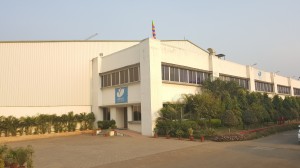
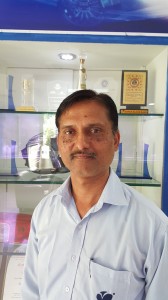

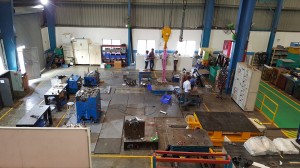
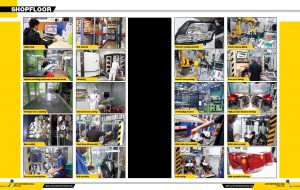
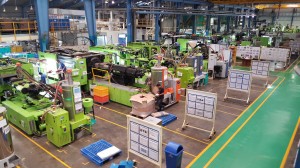
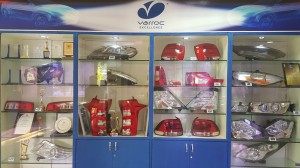

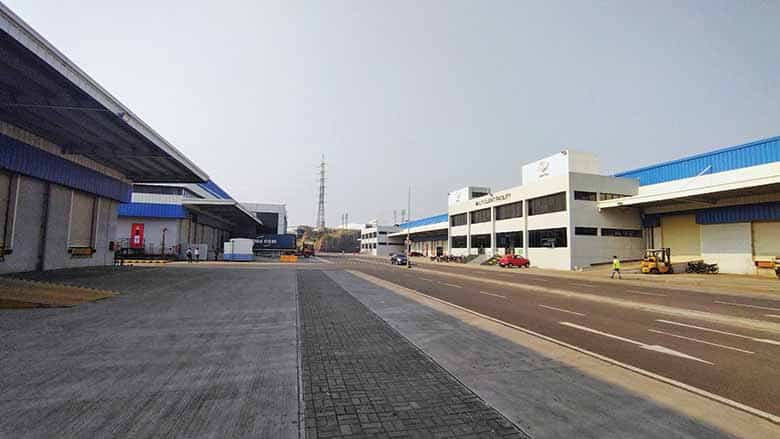



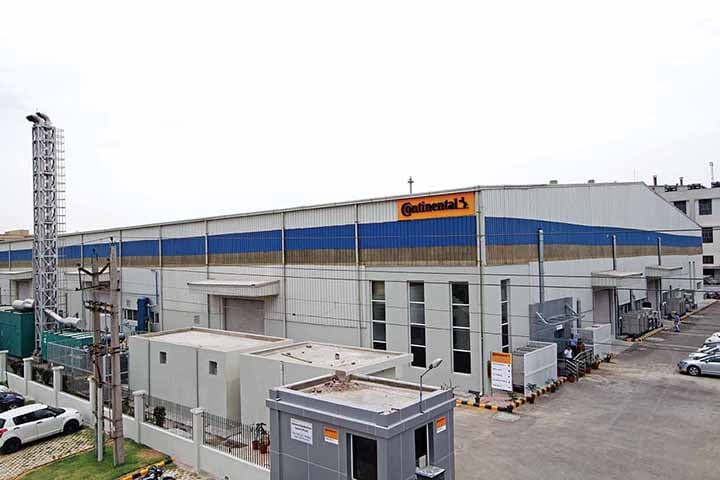



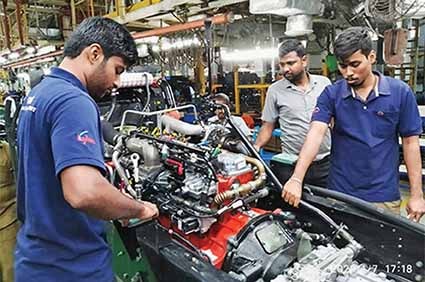
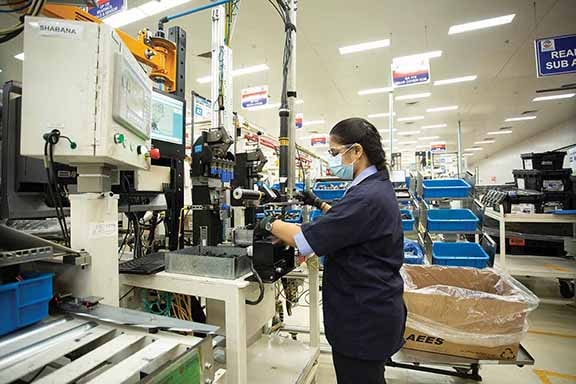

Leave a Reply